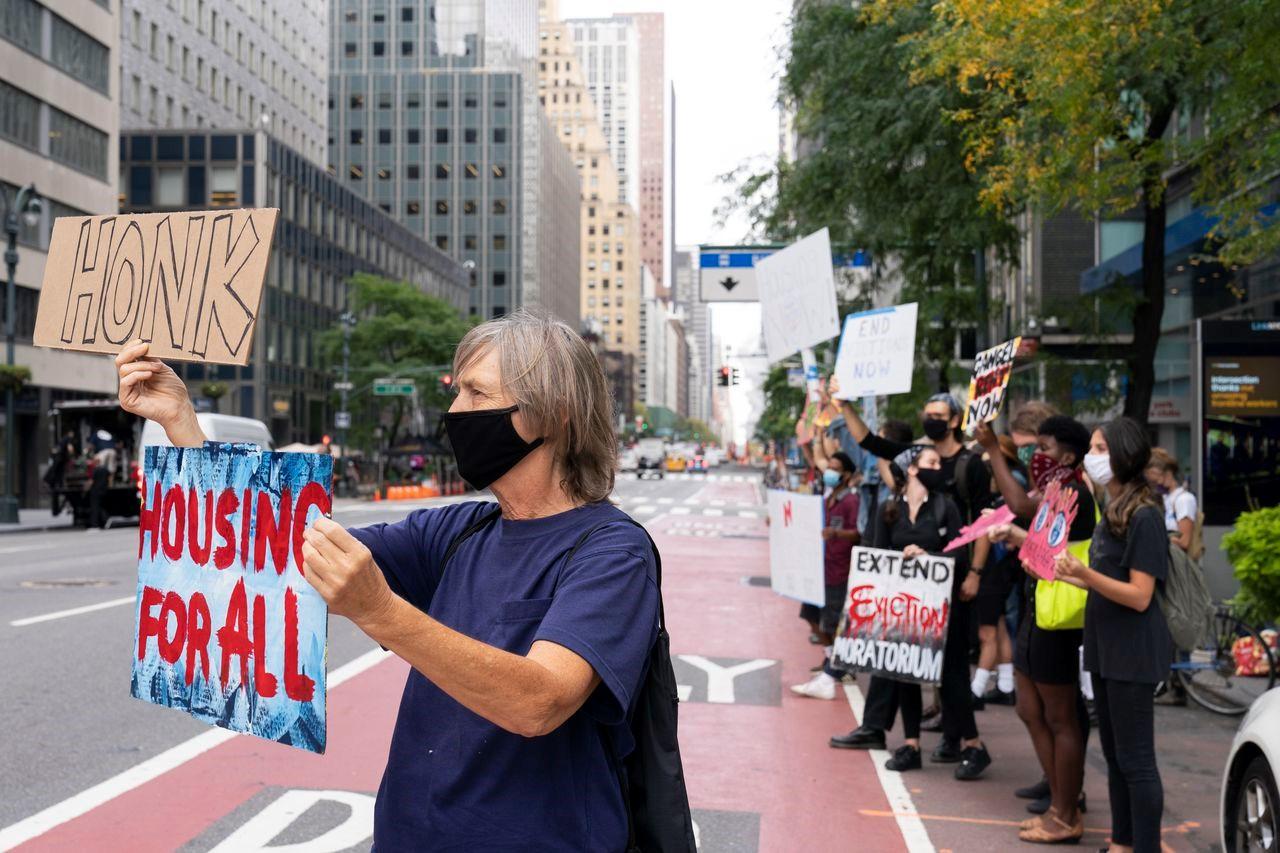
6 minute read
ReEntry Adapts to Pandemic
Re-Entry Team Adapts to Pandemic
By Katie Krusey and Jeff VanBuren, Re-Entry Project
Advertisement
To say the last six months has been difficult for many of our clients would be an understatement. Thrust into a pandemic seemingly overnight, everyone has been forced to adjust. For the Re-Entry Program, this brought two major changes: we needed to adjust to the new types of assistance our clients needed, and to adapt our program to meet the needs of our clients. Individuals with criminal histories

are often faced with discrimination when seeking employment. Most employers review our clients’ criminal history information at some point in the application process. This very often leads to an adverse, and often unlawful, hiring decision. This has a multi-pronged

impact even prior to the pandemic: our clients incur additional obstacles to obtaining employment, and they are often relegated to lower-paid, less desirable jobs. The pandemic, which brought record high unemployment and fierce competition for jobs, has only exacerbated these effects. When the United States unemployment rate soared past 20% on April 23, it was a peak the US had not seen since 1934. Over 30 million unemployment claims have been filed nationally, maxing out
the unemployment rate at around 18.8%, while the New York State unemployment rate peaked at 16% in July. Between March and August 2020, nearly 3.5 million New Yorkers applied for Unemployment Benefits. These high unemployment numbers have put an unprecedented stress on the unemployment system. With the Department of Labor (DOL) web site intermittently crashing, and an overwhelmed phone staff, the early days of COVID were a challenging time to file a claim. Fortunately, the State increased staffing and hours to process phone claims, and was very responsive to clients who had made mistakes when attempting online claims. Through April and May we were able to effectively assist clients who needed advice related to UIB, but the process became more streamlined when State Senator Rachel May’s office
staff became involved. They were able to develop a line of communication with NYS DOL, and provided invaluable assistance to our clients. Combined with the extra $600 per week allotted by the Pandemic Unemployment Assistance program, Re-Entry Program staff were able to facilitate unemployment relief payments for our clients totaling over $40,000. This was an exceptionally rewarding outcome. In March, when the CARES Act included a $1200 Stimulus Payments available to Americans, we saw an immediate need. Because low income folks, who are at the mercy of inscrutable landlords and lack of funding, have to change addresses frequently, it was obvious that many people’s Stimulus Payment checks would be mailed to the wrong address. Updating someone’s address was no easy task. The IRS web site crashed multiple times, and it was nearly impossible to reach a live person on the phone. Current and new clients shared their frustration and desperation as they ran low on money and had bills to pay. It became apparent that, as employment opportunities declined or evaporated and as many of our clients lost their jobs, it was paramount to educate the community about the processes through which they could ensure that they received their stimulus, any UIB they were entitled to, and about the newly announced state eviction moratorium. We spent the month of April riding a steep learning curve while concurrently sharing all reliable information we learned with our clients. Regarding stimulus payments from the IRS, our first advice was to encourage clients who
had moved within the last two years and who were required to file a tax return but who had not done so to file-
electronically. This would serve a dual purpose; first, it would assure that clients receive any tax return to which they were entitled, second, it would act as a “change of address” notification to the IRS. Within weeks of the announced payments, the IRS created a portal through which “non-filers” could provide identifying information and bank account information; several clients were able to obtain payment this way. For two particularly difficult cases, we reached out to Senator Schumer’s office and the office
of Representative John Katko. The latter advised that we submit paper “change of address” forms to the IRS with a Lost Payment declaration. One client was able to obtain payment this way, one client continues to wait for a response.
portable fingerprint station, it is possible to interact outdoors and masked to help clients in a safe manner.
The other main obstacle we faced during the early months NYS Division of Human Rights, and to the NYS Division of Criminal Justice Services, which is the repository of all criminal conviction information from New York State gerprinted nearly every one of our clients. This was necessary to get an accurate record of their conviction history, and correct any errors in the records. Without this information, it is difficult to determine what recourse may be available to the client, and difficult to give them accurate advice. When the pandemic made fingerprinting impossible, we focused on the information we had available; clients’ RAP sheets that we had in hand before April, clients who had a valid copy of their own history, and clients who needed general advice on what they are required to dis-

close by law and how to disclose it. By summer, though, we knew we needed to find a way to obtain RAP sheets- and that meant fingerprinting clients. With no access to the office, and the proximity required to properly fingerprint someone, we had to get creative. By
disassembling and modifying an old open-top school desk, we were able to create a portable fingerprint station. The hinged top allows us to store supplies such as blank fingerprint cards, affidavits, spare masks, wipes, pens and more. With the use of adhesive velcro on the top, we have secured the platen that holds the fingerprint card, ink pad, clipboard, light and wipes to make for a quick and easy fingerprint session. Using the back of an SUV as a portable office space, it’s possible to back into a driveway or parking space and fingerprint a client, outdoors and masked, in
The Pandemic was no match for the Re-Entry Team. Using our
of COVID-19 was access. Access to courts, to clients, to the Courts. In pre-pandemic times, the Re-Entry Program finabout three minutes. Although these changes were borne of necessity, some have been eye-opening and very valuable. We have relied much more on teleconferencing, or, when an in-person meeting is necessary, meeting the client outside for finger-
printing or signing documents. This has proven to be much better for the clients – they no longer need to find childcare, rely on public transportation, or risk exposing themselves to COVID-19. These adaptations have allowed flexibility and, in many ways, fostered better rapport with our clients. The biggest lesson learned from this pandemic may be that the world, and what we know about it, is constantly changing. With no clear end on the horizon, the value of adaptability is at the forefront. As we continue to see what this pandemic has in store for us, we will continue to be resourceful and creative as we work to help our clients with the reintegration process even as the pandemic continues.







